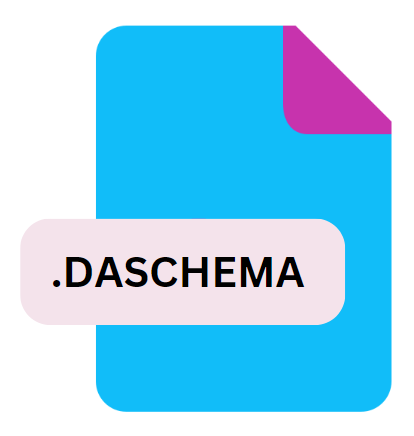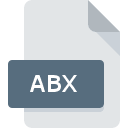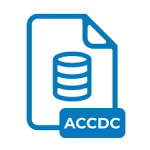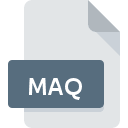.DASCHEMA File Extension

RemObjects Data Abstract Schema File
| Developer | RemObjects |
| Popularity | |
| Category | Database Files |
| Format | .DASCHEMA |
| Cross Platform | Update Soon |
What is an DASCHEMA file?
.DASCHEMA files are primarily utilized within the framework of RemObjects Data Abstract, a powerful toolset for building data-driven applications. These files serve as blueprints, defining the structure and relationships of data entities within an application.
Essentially, they encapsulate the schema information necessary for establishing communication between client and server components in a distributed system.
More Information.
RemObjects Data Abstract was introduced with the aim of revolutionizing the way developers interacted with data in distributed environments.
Before its inception, building and maintaining distributed systems involved intricate data modeling and manual implementation of communication protocols.
With the advent of .DASCHEMA files, developers gained a powerful tool for abstracting away much of this complexity. These files facilitated the seamless exchange of structured data between client and server applications, thereby accelerating the development lifecycle and enhancing productivity.
Origin Of This File.
The genesis of .DASCHEMA files can be traced back to the development of RemObjects Data Abstract, which emerged as a solution for simplifying the complexities of data access and manipulation in multi-tiered applications.
As organizations increasingly adopted distributed architectures, the need for efficient data communication between disparate components became evident. .DASCHEMA files were conceived as a means to streamline this process by providing a standardized format for defining data schemas.
File Structure Technical Specification.
.DASCHEMA files adhere to a structured format designed to represent the various components of a data schema. At their core, these files consist of metadata describing entities, fields, relationships, and constraints within the schema.
The syntax used in .DASCHEMA files are XML-based, making it human-readable and easily parsable by software tools.
A typical .DASCHEMA file may include elements such as:
- Entity Definitions: Descriptions of data entities, including their attributes and relationships.
- Field Definitions: Specifications for individual fields within entities, such as data type and constraints.
- Relationship Definitions: Declarations of associations between different entities, facilitating data navigation and querying.
- Constraint Definitions: Rules governing the validity and integrity of data within the schema.
The technical specifications for .DASCHEMA files are well-documented by RemObjects, providing developers with comprehensive guidelines for creating and interpreting these files.
How to Convert the File?
Converting .DASCHEMA files to other formats or vice versa may be necessary in certain scenarios, such as migrating between different data modeling tools or integrating with third-party systems.
While direct conversion tools for .DASCHEMA files may not be widely available, but developers can leverage various approaches to achieve compatibility:
- Custom Scripts: Developers can write custom scripts or utilities to parse .DASCHEMA files and generate output in the desired format.
- Intermediate Formats: Convert .DASCHEMA files to an intermediate format, such as JSON or CSV, before further processing or conversion.
- Manual Translation: In some cases, manual translation of schema definitions may be necessary, especially when dealing with complex data structures or proprietary formats.
Advantages And Disadvantages.
Advantages:
- Standardization: .DASCHEMA files offer a standardized format for defining data schemas, promoting consistency and interoperability across applications.
- Abstraction: By encapsulating schema information in a separate file, developers can abstract away the complexities of data modeling, focusing instead on application logic.
- Flexibility: .DASCHEMA files support a wide range of data types and relationships, allowing developers to model complex domain structures with ease.
- Tooling Support: The ecosystem around RemObjects Data Abstract provides a suite of tools for working with .DASCHEMA files, including editors, validators, and code generators.
Disadvantages:
- Learning Curve: Mastering the intricacies of .DASCHEMA files and RemObjects Data Abstract may require a significant investment of time and effort.
- Dependency: Applications built using RemObjects technologies are inherently dependent on the framework, which may limit portability and vendor lock-in.
- Complexity: While .DASCHEMA files simplify certain aspects of data management, they can also introduce additional complexity, especially in large-scale projects.
How to Open DASCHEMA?
Open In Windows
- RemObjects Data Abstract for Visual Studio: This integrated development environment (IDE) provides comprehensive support for .DASCHEMA files on Windows.
- Third-party XML editors: Various XML editors available for Windows can be used to view and edit .DASCHEMA files.
Open In Linux
- RemObjects Data Abstract for .NET: While primarily designed for Windows, .NET developers working on Linux can use this framework with Mono or .NET Core.
- Command-line tools: Linux users can leverage command-line XML processing tools, such as xmllint, to manipulate .DASCHEMA files.
Open In MAC
- RemObjects Data Abstract for Cocoa: Developers working on MacOS can utilize this framework for managing .DASCHEMA files within Xcode.
- Text editors: MacOS users can open .DASCHEMA files in any text editor capable of handling XML syntax.













